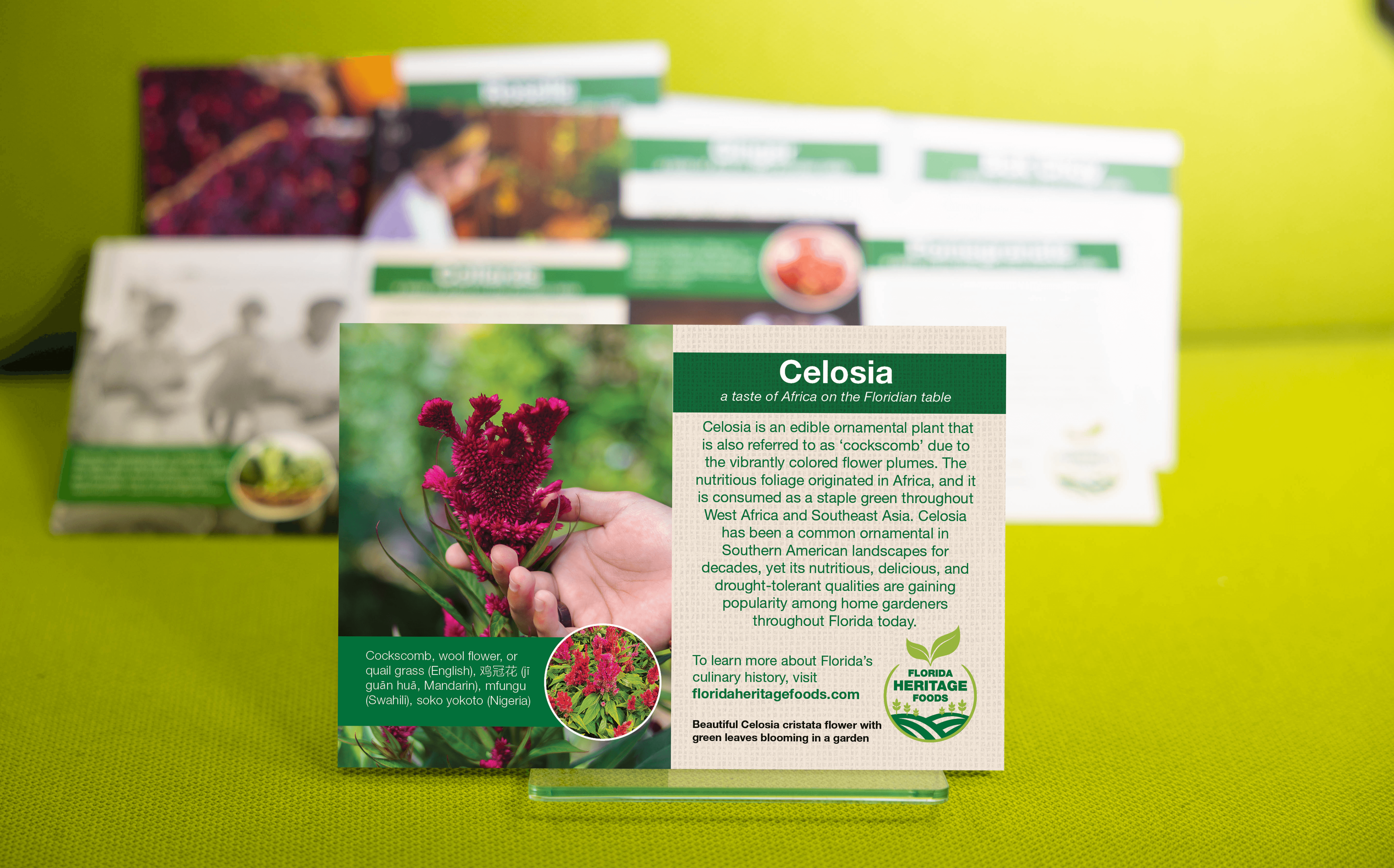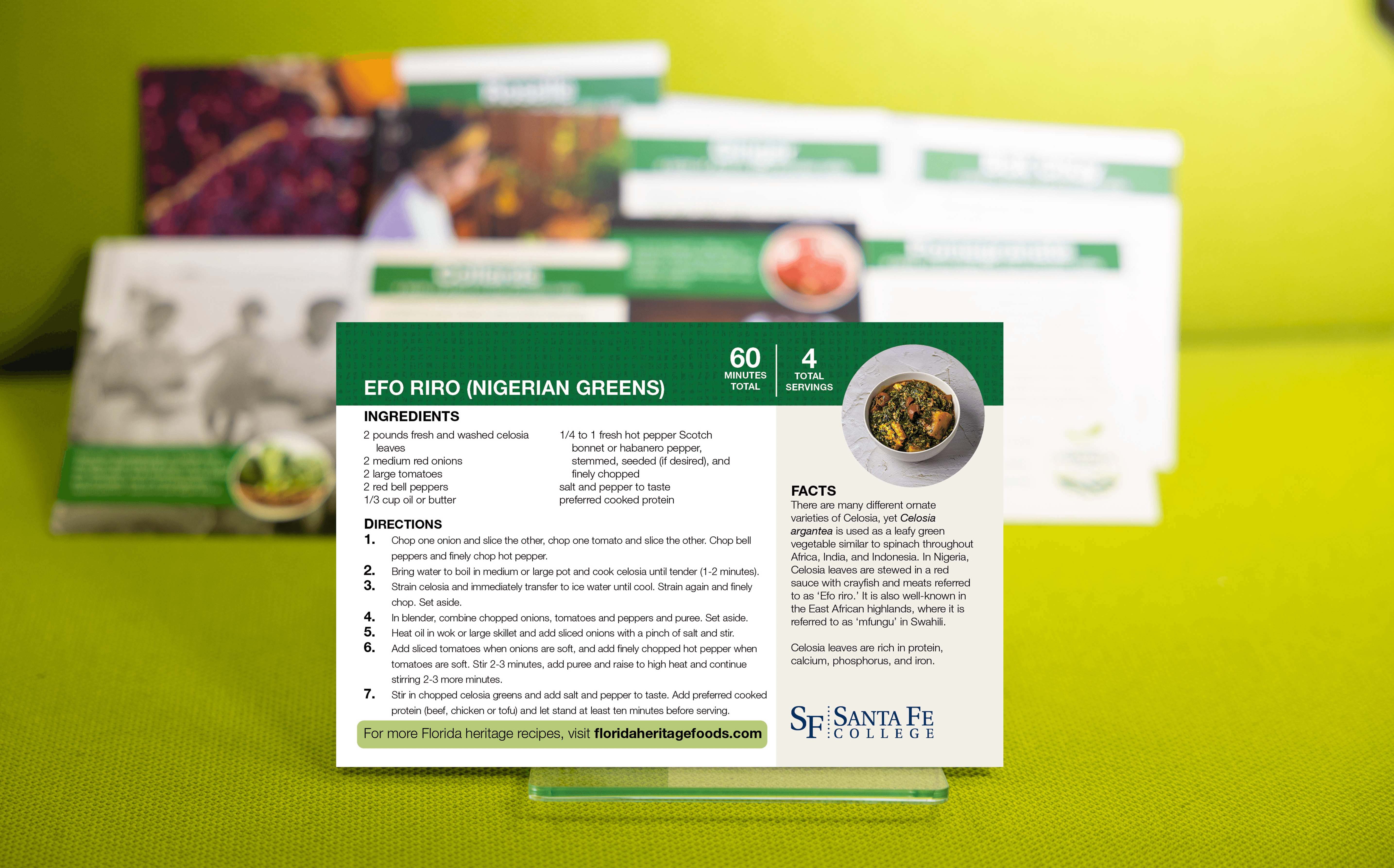Celosia
Celosia argantea

Cockscomb, wool flower, or quail grass (English), 鸡冠花 (jī guān huā, Mandarin), mfungu (Swahili), soko yokoto (Nigeria)
Celosia is an edible ornamental plant that is also referred to as ‘cockscomb’ due to the vibrantly colored flower plumes. The nutritious foliage originated in Africa, and it is consumed as a staple green throughout West Africa and Southeast Asia. Celosia has been a common ornamental in southern American landscapes for decades, yet its nutritious, delicious, and drought-tolerant qualities are gaining popularity among home gardeners throughout Florida today.

Celosia originated in Africa, and it spread to India and Indonesia during prehistory. It is available throughout the world today, but it is most common in tropical and subtropical regions. Celosia is most popular as a food in drought-prone areas because it is a nutrient-dense green that grows well in dry climates and poor soil. World food organizations recently began promoting celosia for cultivation in equatorial regions where famine and malnourishment are prevalent. Celosia is most known in the Americas as a colorful ornamental suitable for landscaping in southern states like Florida. Yet its quality as a nutritious and delicious food is gaining popularity among home gardeners throughout Florida today.
There are many different ornate varieties of Celosia, yet Celosia argantea is used as a leafy green vegetable similar to spinach throughout Africa, India, and Indonesia. It is the leading leafy green vegetable consumed in West Africa where it is also known as ‘Lagos spinach.’ Its name in the Yoruba language is “sokoyokoto” or “the vegetable that makes your husband’s face rosey.” In Nigeria, Celosia leaves are stewed in a red sauce with crayfish and meats is referred to as “Efo riro.’ It is also well-known in the East African highlands, where it is referred to as ‘mfungu’ in Swahili. In parts of India, Celosia is cooked and mashed in a dish called, “Keerai masiyal”. Celosia is widespread in the Americas, particularly Mexico and the southern region of the U.S. as an ornamental where it is referred to as ‘cockscomb’ due to the vibrantly colored flowers. Contemporary Florida gardeners are beginning to grow edible celosia as a summertime alternative cool-weather spinach.

Celosia leaves are rich in protein, calcium, phosphorus, and iron.


Plant Celosia in areas with good drainage and full sun during the months of April through June, and again in September and October via direct seeding or transplants. Harvest leaves and flowers June through November. Plants are frost-sensitive. Allow some flowers to dry on the stem and harvest the tiny black seeds for planting next season. To plan a Florida heritage garden, download the ‘Planning a Florida Heritage Garden (PDF).

Santa Fe College Partnered with Multiple Organizations in a Collaborative Effort to Bring Awareness of the Heritage Plants In Florida.
BY CULTURAL HISTORY
BY GROWING SEASON
DROUGHT TOLERANT PLANTS
Commitment to Equal Access and Equal Opportunity
Santa Fe College is committed to an environment that embraces diversity, respects the rights of all individuals, is open and accessible, and is free of harassment and discrimination. For more information, visit sfcollege.edu/eaeo or contact equity.officer@sfcollege.edu.
SACSCOC Accreditation Statement
Santa Fe College is accredited by the Southern Association of Colleges and Schools Commission on Colleges (SACSCOC). For more information, visit sfcollege.edu/sacscoc.
